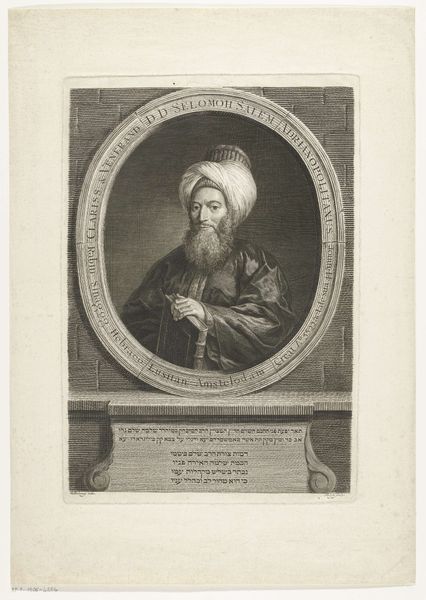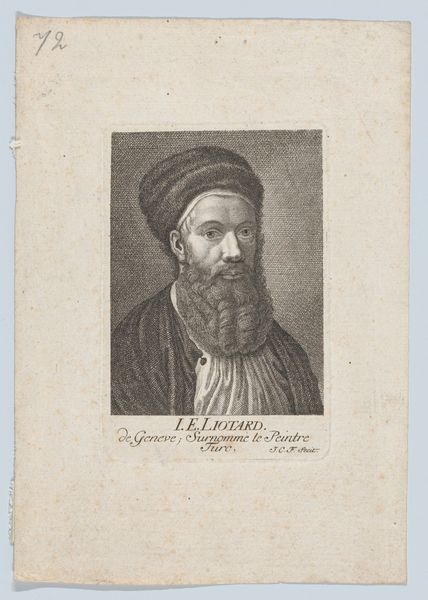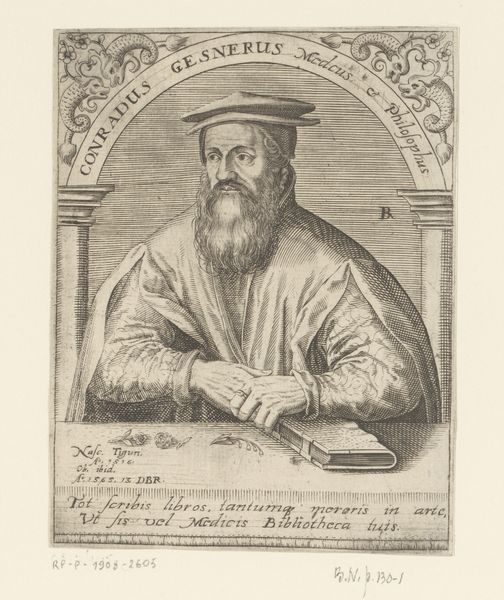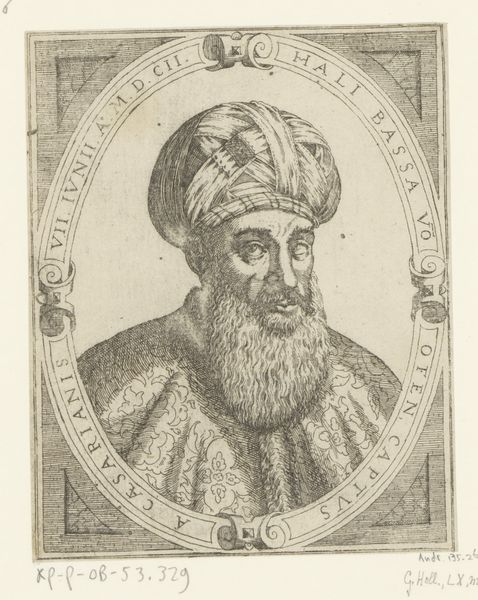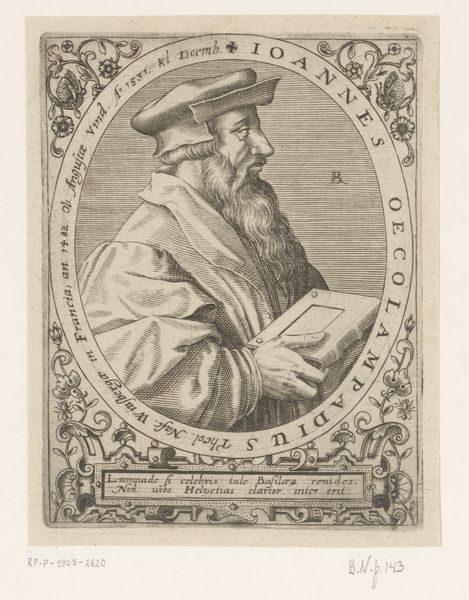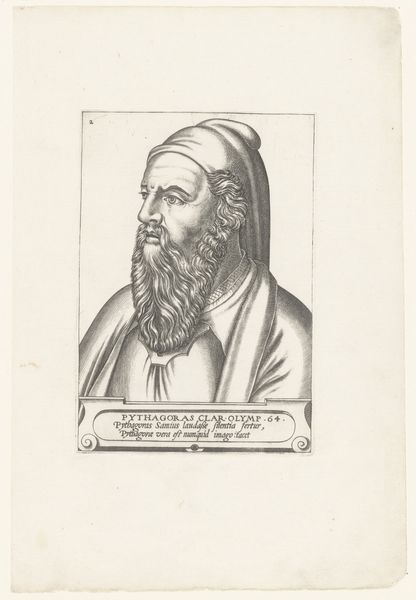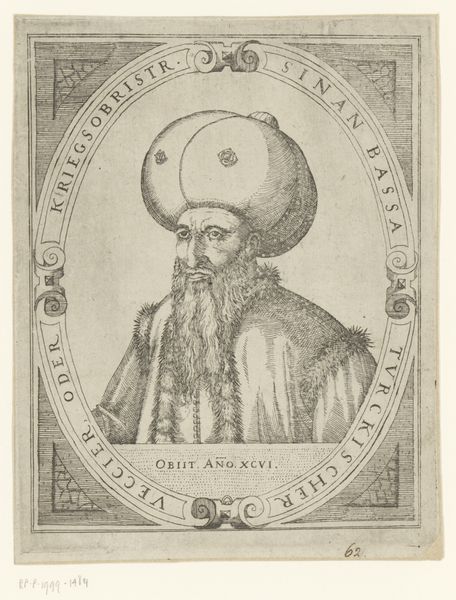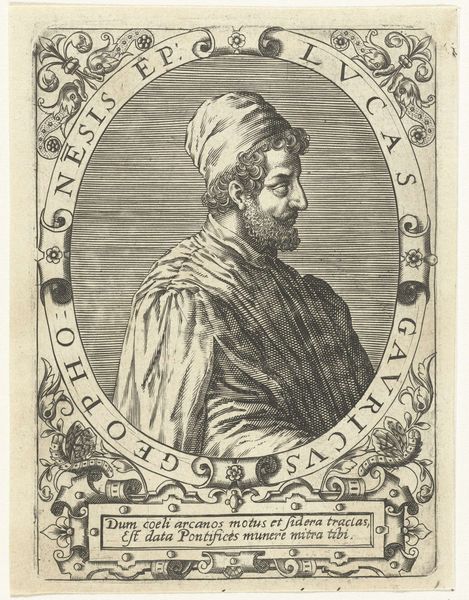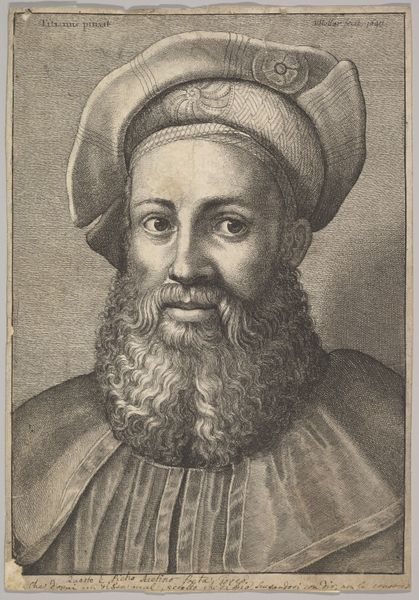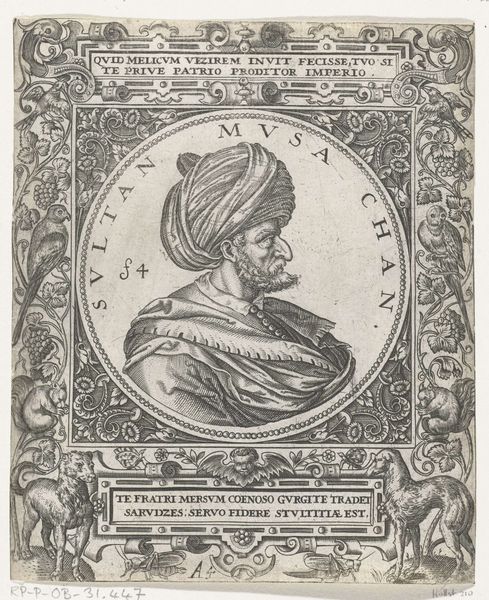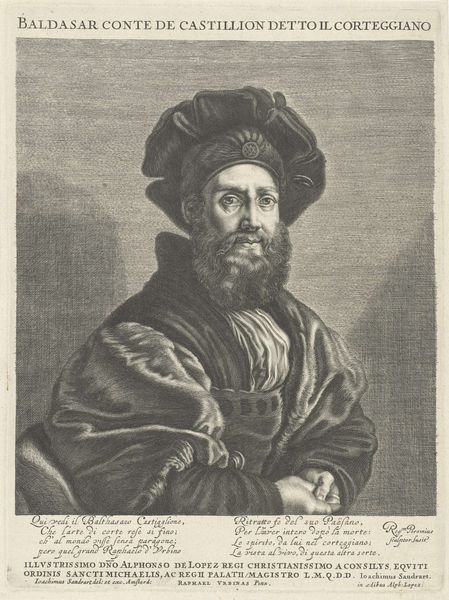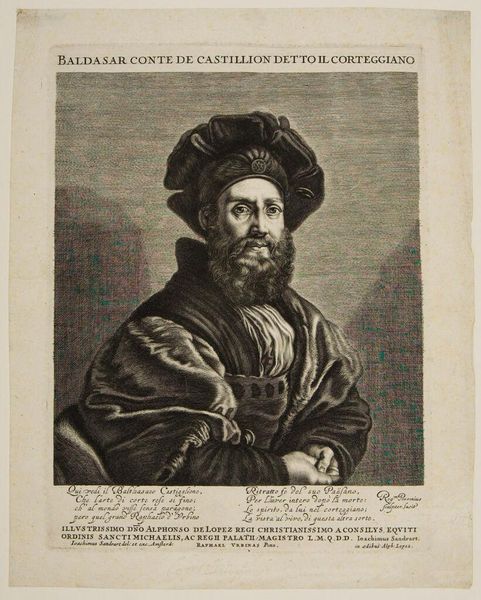
print, engraving
#
portrait
# print
#
book
#
old engraving style
#
11_renaissance
#
academic-art
#
engraving
Dimensions: height 143 mm, width 106 mm
Copyright: Rijks Museum: Open Domain
Editor: Here we have Robert Boissard's "Portret van Guglielmo Gratarolo," an engraving dating from around 1597-1599. The detail is remarkable, given the medium. It feels very formal, almost stoic. How do you interpret this work? Curator: Well, the formality is definitely part of the intent. Consider the context: portraits like this, particularly engravings, served to immortalize and disseminate images of important figures. Guglielmo Gratarolo was a prominent physician, and this portrait would have circulated amongst intellectual circles. It speaks to the power and influence of the printed image in shaping reputations. What does the text accompanying the image tell us? Editor: There’s some Latin text that seems to be about his accomplishments, and an annotation stating he died in 1566, but that conflicts with the portrait's later date of 1597-1599. It feels a bit odd to be a posthumous image. Curator: Precisely. The posthumous nature frames this image as a form of memorialization. We should question whose interests are being served. By placing him within this framework – classical columns, a Latin inscription – we're seeing an attempt to construct a very specific image of Gratarolo. How does that construction speak to contemporary notions of science and intellectual authority? What are the power dynamics at play in creating and circulating such an image? Editor: So, it's not just about remembering him, but about controlling how he’s remembered, about shaping his legacy within a specific intellectual framework? Curator: Exactly. And that control reflects the values and priorities of the society that produced this print. Considering Boissard’s motives and possible patronage allows us a glimpse into that specific cultural moment and its social values. It encourages us to read these portraits not as neutral representations, but as actively constructed narratives. Editor: I never really thought about portraiture as a power play. That's a really interesting way to see it. Thank you! Curator: My pleasure. It's about uncovering the layers of meaning and intention behind these seemingly straightforward depictions.
Comments
No comments
Be the first to comment and join the conversation on the ultimate creative platform.
